I absolutely love bleu cheese and have always been fascinated by its unique flavor and texture. Bleu cheese, also known as blue cheese, is a type of cheese made from cow, goat, or sheep milk that is cultured and molded with Penicillium. This mold gives the cheese its characteristic blue veins and strong, pungent aroma.
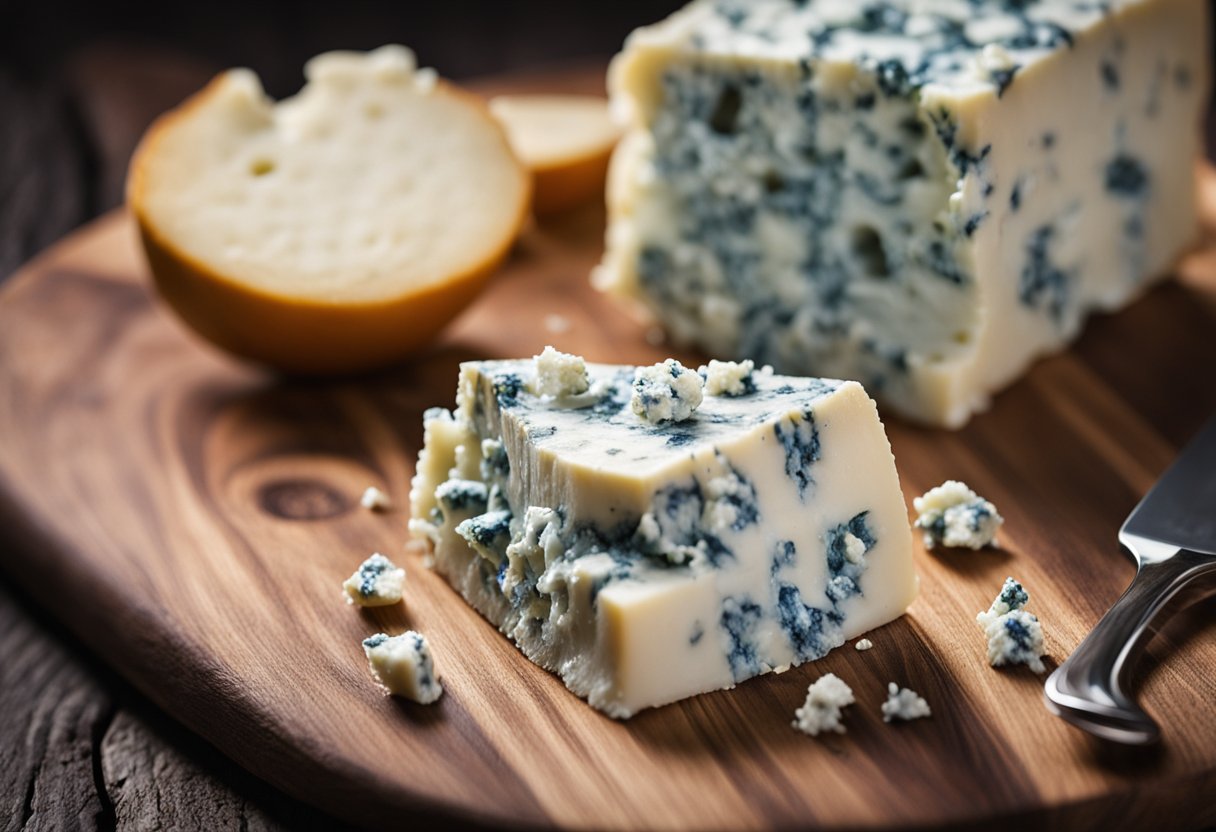
When it comes to taste, bleu cheese is definitely an acquired one. The cheese has a sharp, tangy flavor that can be quite intense for some people.
However, once you get used to the taste, you’ll find that it has a rich, creamy texture that pairs well with many different foods.
Key Takeaways
- Bleu cheese is a type of cheese made from cow, goat, or sheep milk that is cultured and molded with Penicillium.
- Bleu cheese has a sharp, tangy flavor that can be quite intense for some people, but it also has a rich, creamy texture that pairs well with many different foods.
- Bleu cheese is an acquired taste, but it is definitely worth trying if you’re a fan of strong, flavorful cheeses.
The Origin of Bleu Cheese
Bleu cheese, also known as blue cheese, is a type of cheese that is characterized by the blue veins that run through it.
The cheese is made by introducing a type of mold, usually Penicillium roqueforti or Penicillium glaucum, into the cheese during the production process. The mold gives the cheese its distinctive flavor and aroma.
The origins of bleu cheese can be traced back to France and Italy, where it is believed to have been invented by accident during the Middle Ages.
According to one popular legend, bleu cheese was first discovered by a French shepherd who left a piece of cheese in a cave and returned to find that it had become moldy. Despite its unappetizing appearance, the shepherd tasted the cheese and found that it had a unique and delicious flavor.
Today, there are many different types of bleu cheese available, each with its own unique flavor and texture. Some of the most popular varieties include Gorgonzola from Italy, Roquefort from France, and Stilton from England.
These cheeses are often made with different types of milk, including sheep, cow, and goat milk, and may be aged for different lengths of time to achieve different levels of flavor.
In order to ensure that consumers are getting authentic bleu cheese, many countries have established protected designation of origin (PDO) regulations. These regulations specify that certain types of bleu cheese can only be made in specific regions using specific production methods.
For example, Roquefort can only be made using raw sheep milk and must be aged in the natural caves of Roquefort-sur-Soulzon in France.
Overall, bleu cheese is a flavorful and unique cheese that has a long and interesting history. Whether you prefer the tangy flavor of Roquefort or the creamy texture of Gorgonzola, there is sure to be a bleu cheese that will satisfy your taste buds.
Types of Bleu Cheese
Bleu cheese is a type of cheese that has been ripened with cultures of the mold Penicillium. This mold gives the cheese its characteristic blue veins and tangy flavor. There are many types of bleu cheese, each with its own unique flavor profile. In this section, I will discuss some of the most popular types of bleu cheese.
Gorgonzola
Gorgonzola is a type of bleu cheese that originated in Italy. It is made from cow’s milk and has a creamy texture. The cheese is aged for at least three months, during which time it develops a sharp, tangy flavor. Gorgonzola can be crumbled over salads or used as a topping for pizza.
Roquefort
Roquefort is a French bleu cheese made from sheep’s milk. It has a strong, pungent flavor and a crumbly texture. Roquefort is aged for at least three months in natural caves, which gives it a unique flavor. This cheese is often paired with fruit or nuts.
Stilton
Stilton is a British bleu cheese made from cow’s milk. It has a creamy texture and a milder flavor than some other types of bleu cheese. Stilton is often used in cooking, as it melts easily and adds a tangy flavor to dishes.
Danish Blue Cheese
Danish blue cheese is a type of bleu cheese made from cow’s milk. It has a creamy texture and a sharp, tangy flavor. This cheese is often crumbled over salads or used as a topping for burgers.
Bleuchâtel
Bleuchâtel is a Swiss bleu cheese made from cow’s milk. It has a mild, creamy flavor and a soft, spreadable texture. This cheese is often used as a spread on bread or crackers.
Cambozola
Cambozola is a German bleu cheese made from cow’s milk. It has a creamy texture and a mild, nutty flavor. Cambozola is often used in cooking, as it melts easily and adds a tangy flavor to dishes.
Gorgonzola Dolce
Gorgonzola Dolce is a milder version of Gorgonzola. It is also made from cow’s milk, but it is aged for a shorter period of time, which gives it a milder, creamier flavor. Gorgonzola Dolce is often used in cooking, as it adds a tangy flavor to dishes without being overpowering.
In conclusion, there are many types of bleu cheese, each with its own unique flavor profile. Whether you prefer a mild, creamy cheese or a strong, pungent one, there is a bleu cheese out there for you.
Taste and Texture of Bleu Cheese
Bleu cheese is known for its distinct taste and texture. It has a salty and pungent taste that can be quite powerful.
The blue veins in the cheese are created by the mold Penicillium roqueforti, which gives it a tangy taste. The taste of bleu cheese can vary depending on the type of cheese and how long it has been aged.
In terms of texture, bleu cheese has a semi-soft texture that can range from crumbly to creamy. The texture of the cheese can also vary depending on the type of cheese and how long it has been aged.
Some varieties of bleu cheese have a creamy texture that can be spread easily, while others are crumbly and can be used as a topping for salads or other dishes.
The saltiness of bleu cheese is one of its defining characteristics. The cheese is often used as a seasoning or flavoring agent in dishes because of its strong taste. It pairs well with other strong flavors like garlic and onions.
Despite its pungent taste, bleu cheese has a creamy texture that can be quite pleasant to eat. The creaminess of the cheese helps to balance out the strong taste and makes it more palatable for some people.
Overall, the taste and texture of bleu cheese can be quite complex and may take some getting used to. It is a cheese that is not for everyone, but for those who enjoy it, it can be a delicious addition to many dishes.
How Bleu Cheese is Made
As a cheese lover, I’ve always been fascinated by how bleu cheese is made. Bleu cheese is a type of cheese that is ripened with cultures of the mold penicillium, which gives it its distinctive blue-green veins. In this section, I’ll take you through the process of how bleu cheese is made.
Milk and Culture
The first step in making bleu cheese is to pasteurize the milk. The milk can come from cows, sheep, or goats. Once the milk is pasteurized, it is treated with a starter culture that converts lactose to lactic acid and changes the milk from liquid to solid. This process is called coagulation.
Rennet and Curds
Next, rennet is added to the milk to coagulate it further. Rennet is an enzyme that helps to separate the curds from the whey. The curds are then cut to release the whey and to create the texture of the cheese.
Piercing and Veining
Once the curds have been cut, the cheese is formed into molds and left to ripen. During the ripening process, the cheese is pierced with stainless steel needles to create channels for air to flow through. This allows the mold to grow and creates the blue-green veins that are characteristic of bleu cheese.
Edible Molds
The mold that is used to create bleu cheese is a type of Penicillium. There are several different strains of Penicillium that can be used, including Penicillium roqueforti and Penicillium glaucum. These molds are edible and safe to consume.
In conclusion, bleu cheese is a unique and delicious cheese that is made using a specific process. From the pasteurization of the milk to the piercing of the cheese, each step is important in creating the distinctive flavor and texture of bleu cheese.
Health Benefits and Nutritional Information
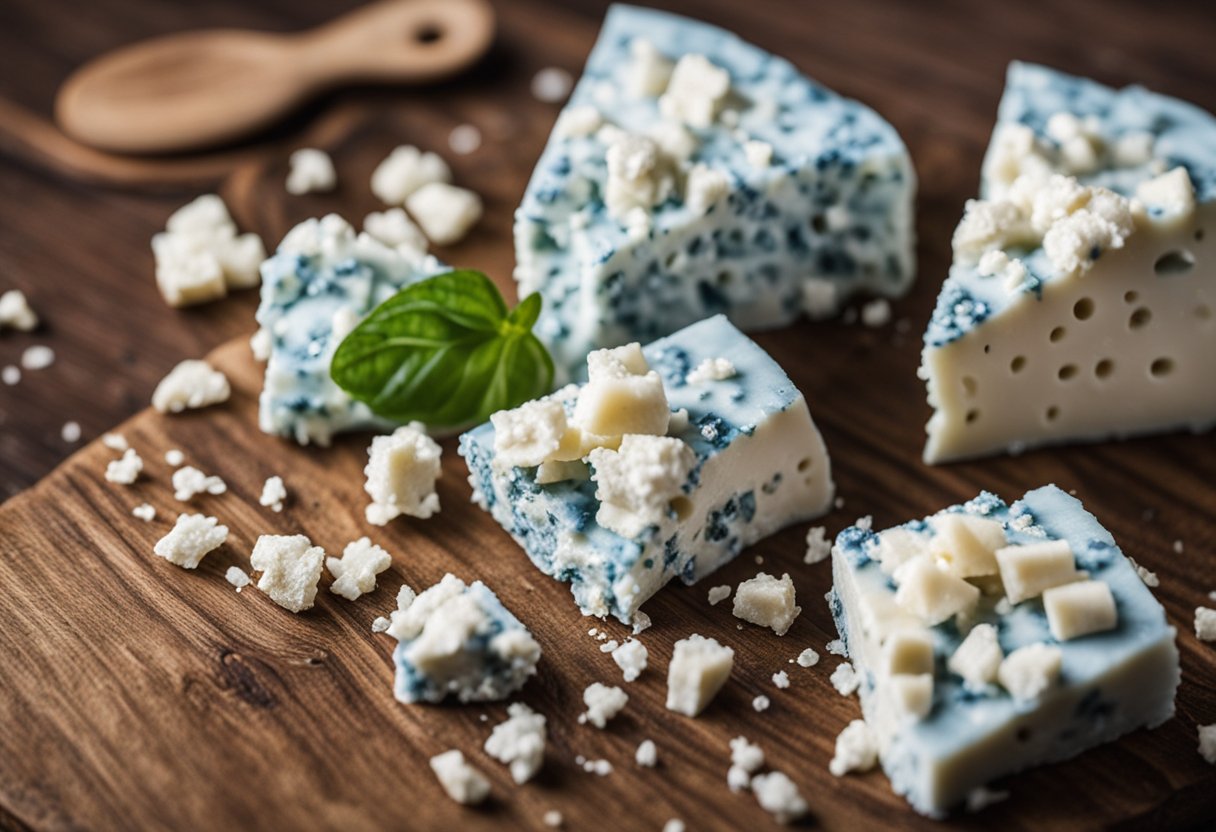
As a cheese lover, I’m always curious about the nutritional value of my favorite cheeses. Blue cheese is no exception. It’s not only delicious but also packed with nutrients that can benefit our health.
First of all, blue cheese is a good source of protein, which is essential for building and repairing tissues in our body. According to Verywell Fit’s nutrition facts, a 1-ounce serving (28 grams) of blue cheese contains 6.1 grams of protein.
Another nutrient that blue cheese is rich in is calcium, which is crucial for strong bones and teeth. A 1-ounce serving of blue cheese provides 150mg of calcium, as per Verywell Fit. This is about 15% of the daily recommended intake of calcium for adults.
Despite its high-fat content, blue cheese can still be a part of a healthy diet, as long as it’s consumed in moderation. In fact, blue cheese may even help prevent obesity.
A study published in the Journal of Agricultural and Food Chemistry found that a compound called spermidine, which is present in blue cheese, can help prevent obesity by promoting autophagy, a process that removes damaged cells and promotes the regeneration of healthy ones.
However, it’s important to note that blue cheese is also high in sodium, which can be a concern for people with high blood pressure or other health conditions. A 1-ounce serving of blue cheese contains 393mg of sodium, according to Verywell Fit.
In terms of calories, blue cheese is not the lowest-calorie cheese out there, but it’s not the highest either. A 1-ounce serving of blue cheese provides around 100-120 calories, depending on the brand and type.
Finally, blue cheese is low in carbohydrates, making it a good option for people on low-carb diets. A 1-ounce serving of blue cheese contains less than 1 gram of carbohydrates, according to Verywell Fit.
Overall, blue cheese can be a nutritious addition to your diet, as long as you consume it in moderation and take into account its high sodium and calorie content.
Pairing and Serving Suggestions
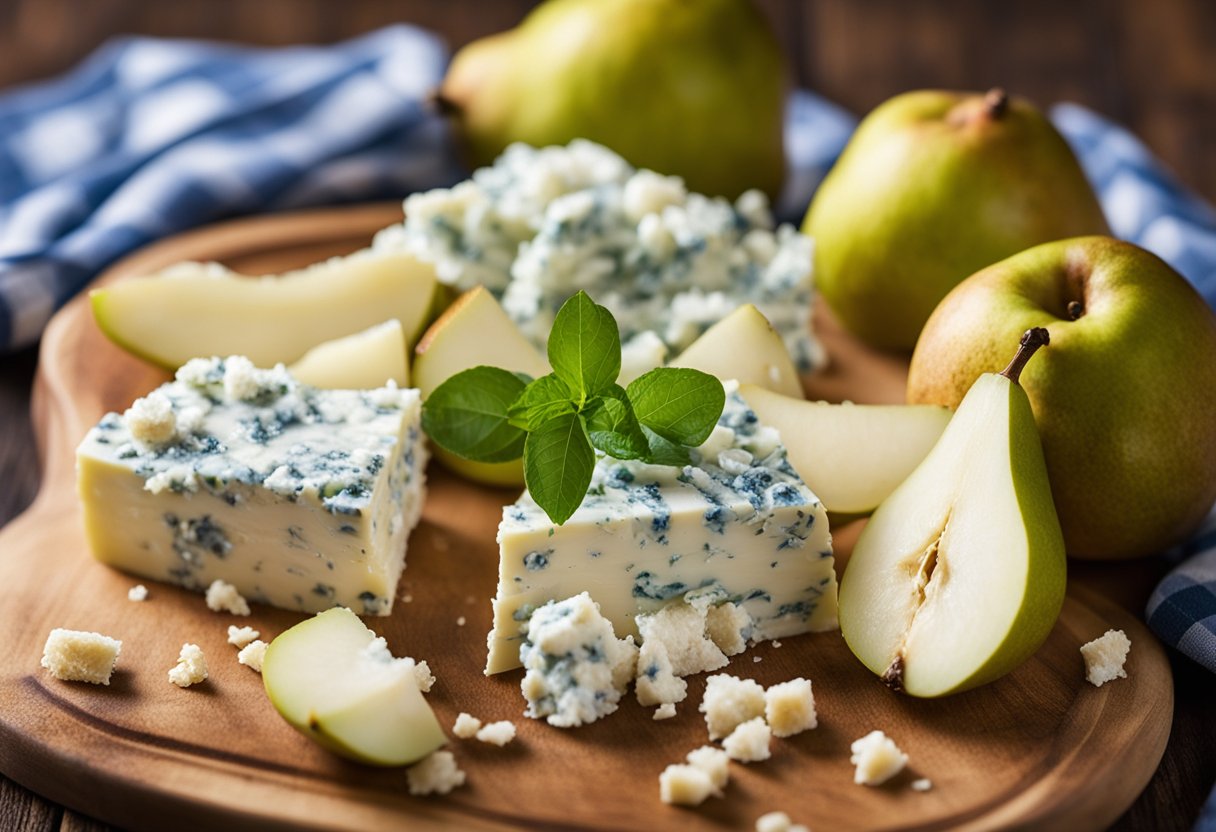
When it comes to pairing and serving blue cheese, there are many options to choose from. Blue cheese is a versatile cheese that pairs well with a variety of foods and beverages. Here are some of my favorite pairing and serving suggestions:
Cheese Plate
A cheese plate is a classic way to serve blue cheese. Pair it with crackers, bread, and fruit for a delicious and easy appetizer. Blue cheese pairs beautifully with honey, dried fruit, apple or pear slices, figs, and walnuts.
For something special, try serving blue cheese with my Cranberry and Dried Cherry Sauce. Serve with champagne and other sparkling wines, big reds, port, sherry, ice wines, or other dessert wines.
Salads
Blue cheese is a popular ingredient in salads. It adds a tangy and creamy flavor to any salad. Pair it with fresh greens, nuts, and a vinaigrette dressing for a delicious and healthy meal. Blue cheese also pairs well with mushrooms and can be added to a mushroom salad for a unique and flavorful twist.
Sandwiches
Blue cheese can be added to sandwiches for a delicious and savory flavor. It pairs well with roast beef, turkey, and chicken. Add blue cheese to your favorite sandwich for a gourmet twist.
Dipping Sauce
Blue cheese can be used as a dipping sauce for vegetables, chicken wings, and more. Mix blue cheese with ranch dressing for a delicious and tangy dip. It also pairs well with honey for a sweet and savory flavor.
Sauces
Blue cheese can be used in sauces for pasta, steak, and more. It adds a rich and creamy flavor to any dish. Pair it with a bold red wine or port for a delicious and sophisticated meal.
Overall, blue cheese is a versatile and delicious cheese that pairs well with many foods and beverages. Experiment with different pairings and serving suggestions to find your favorites.
Common Misconceptions About Bleu Cheese
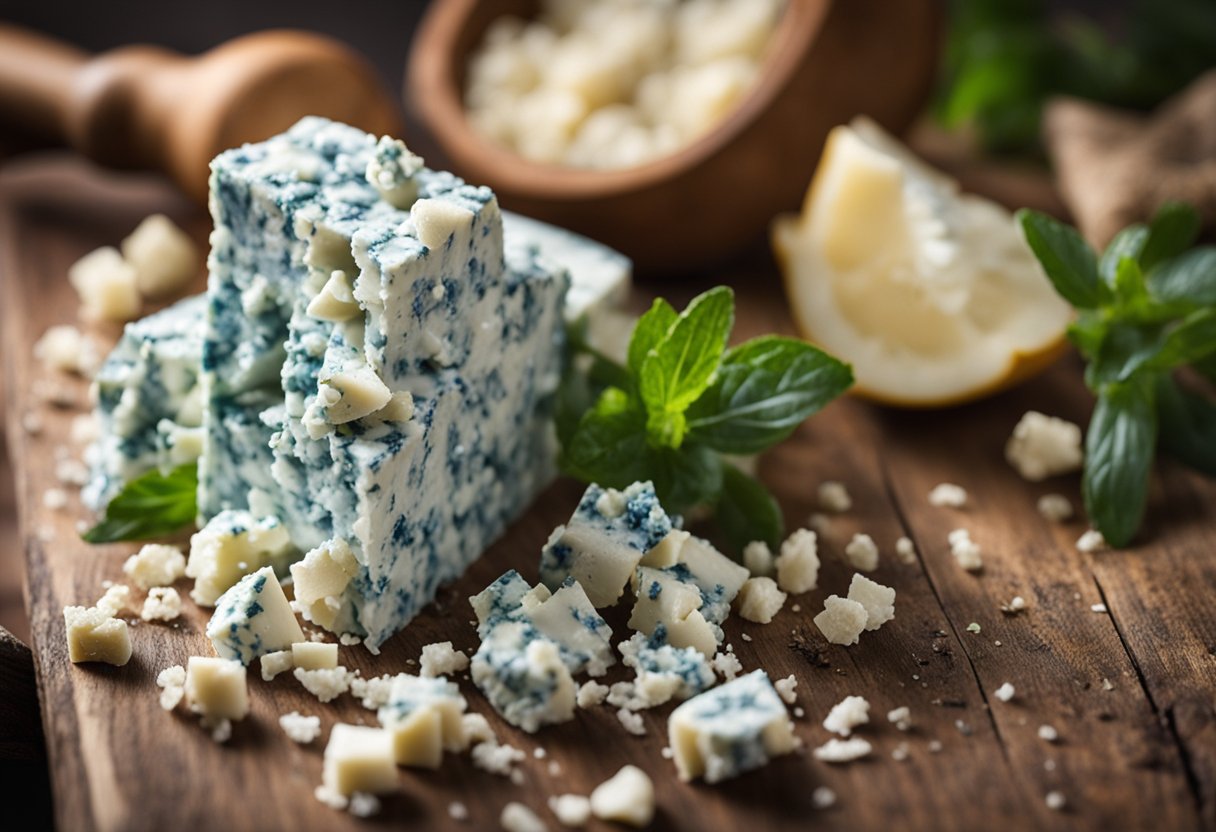
As a cheese lover, I have heard many misconceptions about bleu cheese over the years. Here are a few common ones that I would like to address:
Spoiled Blue Cheese
One of the most common misconceptions about bleu cheese is that it is spoiled. While it is true that bleu cheese is aged and has mold in it, this is a natural part of the cheese-making process.
The mold is carefully controlled and is safe to eat. In fact, the mold is what gives bleu cheese its distinctive flavor.
Ammonia
Another misconception about bleu cheese is that it has a strong ammonia smell. While it is true that some bleu cheeses can have a strong smell, this is not caused by ammonia.
Instead, it is caused by the mold in the cheese. The smell is actually a sign that the cheese is ripe and ready to eat.
Pink Slime
There is a rumor that bleu cheese contains pink slime, a meat byproduct that is often used as a filler in processed meats. This is not true. Bleu cheese is made from milk, mold, and other natural ingredients. There is no pink slime in bleu cheese.
Distinctive Smell
Bleu cheese has a distinctive smell that some people find unpleasant. However, this is a matter of personal preference. If you are not a fan of the smell, you may want to try a milder bleu cheese or use it in small amounts in recipes.
In conclusion, there are many misconceptions about bleu cheese that are simply not true. Bleu cheese is a delicious and natural cheese that has been enjoyed for centuries. Don’t let these myths keep you from enjoying this tasty cheese.
Comparison with Other Cheeses
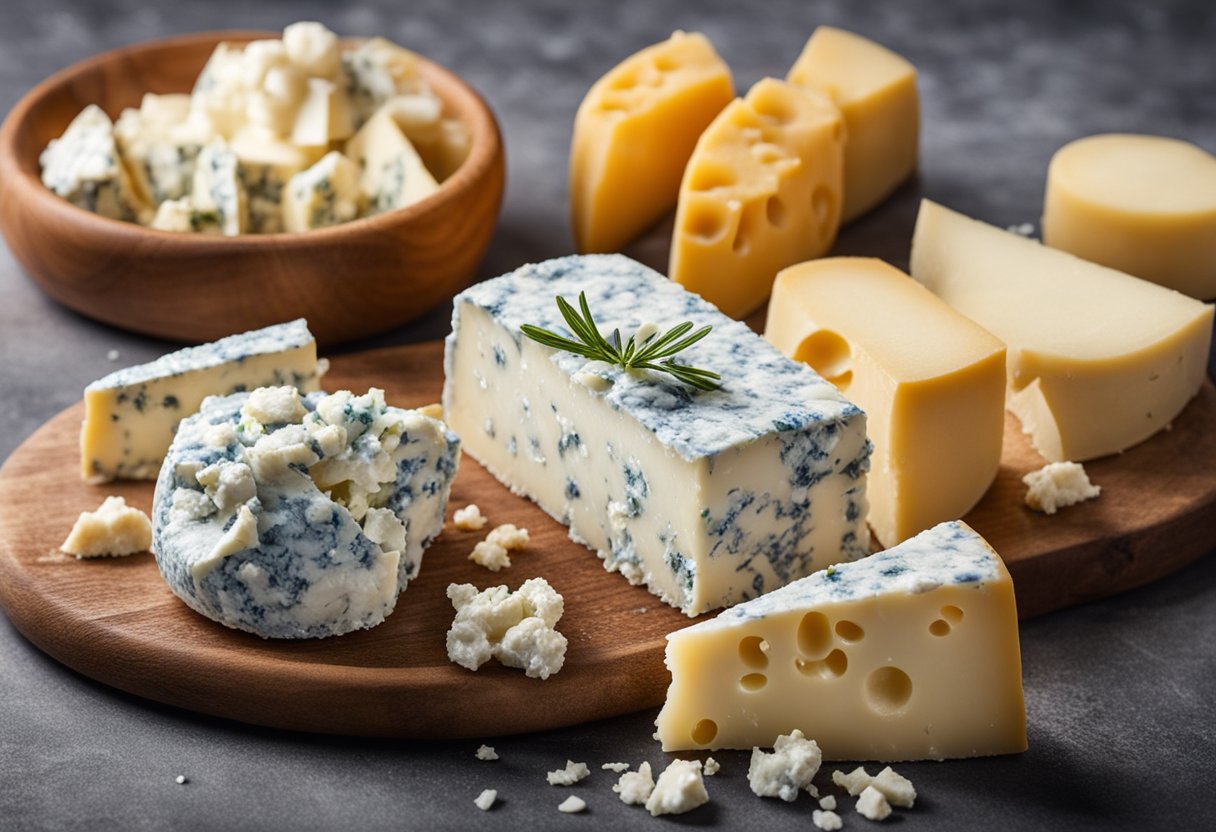
As a cheese lover, I have tried many different types of cheeses, and I can confidently say that blue cheese has a unique taste that sets it apart from other cheeses. Here are some comparisons with other types of cheeses:
- Brie: Brie is a soft cheese that has a mild, creamy flavor. Unlike blue cheese, it does not have a strong or pungent taste. Brie has a buttery texture and a slightly nutty aftertaste.
- Semi-soft: Semi-soft cheeses like Havarti and Gouda have a mild, nutty flavor and a smooth, creamy texture. They are not as strong as blue cheese and do not have the same pungent aroma.
- French Cheese: France is known for producing some of the world’s best cheeses, including Camembert and Roquefort. Roquefort is a type of blue cheese that is similar in taste to other blue cheeses but has a more crumbly texture. Camembert, on the other hand, has a mild, buttery flavor and a creamy texture.
- Goat Cheese: Goat cheese has a tangy, slightly sour taste that is similar to blue cheese. However, goat cheese is not as pungent or salty as blue cheese. It has a creamy texture and can be used in a variety of dishes.
- Feta Cheese: Feta cheese is a crumbly cheese that has a salty, tangy taste. It is not as strong as blue cheese but can be used in similar dishes. Feta cheese is often used in Greek salads and Mediterranean dishes.
- Gouda Cheese: Gouda cheese has a nutty, caramel-like flavor that is similar to semi-soft cheeses. It has a smooth, creamy texture and can be used in a variety of dishes.
- Cheddar: Cheddar cheese has a sharp, tangy taste that is similar to blue cheese. However, cheddar is not as pungent or salty as blue cheese. It has a firm texture and can be used in a variety of dishes.
Overall, blue cheese has a unique taste that is difficult to compare to other cheeses. It has a strong, pungent aroma and a salty, tangy taste that is not for everyone. However, if you are a fan of strong cheeses, blue cheese is definitely worth trying.
Purchasing and Storing Bleu Cheese
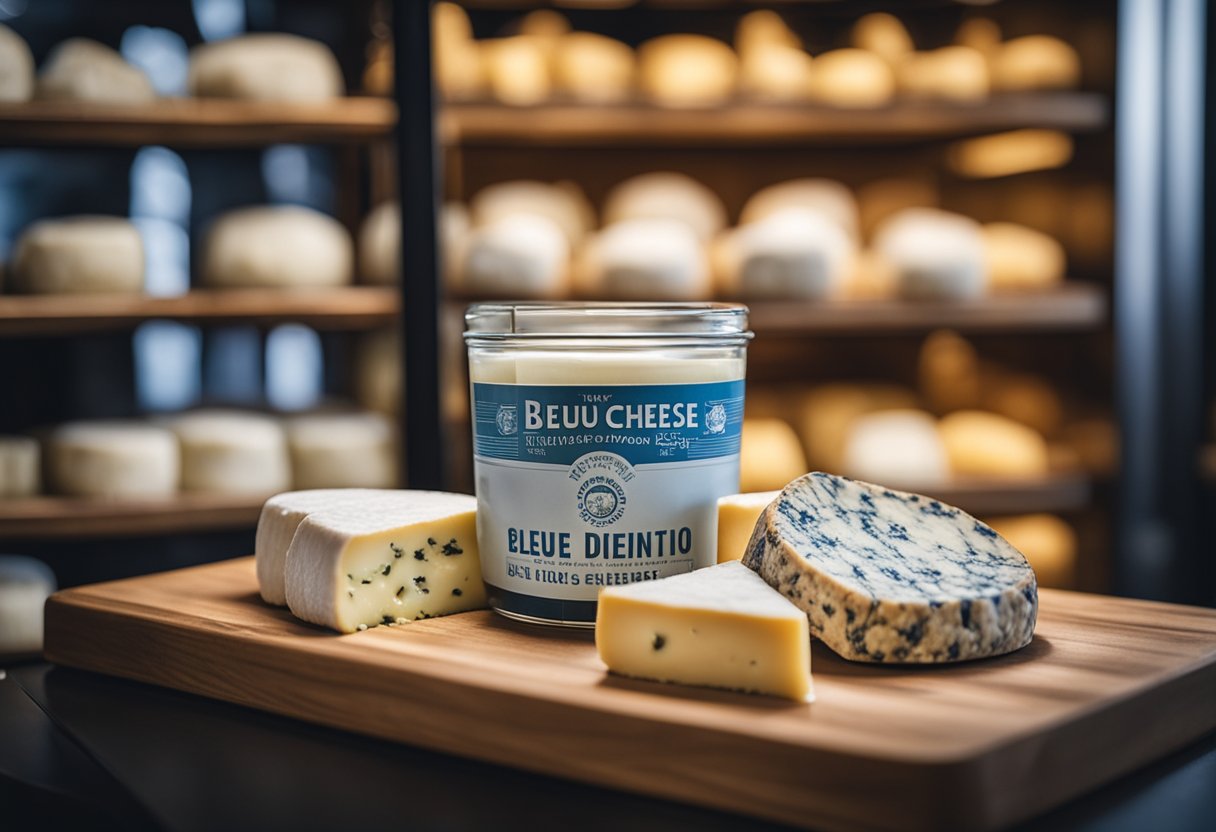
When it comes to purchasing bleu cheese, I always recommend going to a reputable cheesemonger.
They will be able to guide you through the different types of bleu cheese available and help you find the perfect one for your taste preferences. Keep in mind that bleu cheese can be quite expensive, but a little goes a long way in terms of flavor.
One of the defining characteristics of bleu cheese is its intensity. The mold used to create bleu cheese gives it a strong, pungent flavor that can be overwhelming for some.
If you’re new to bleu cheese, I suggest starting with a milder variety like Gorgonzola or Roquefort and working your way up to stronger types like Stilton or Maytag.
When it comes to storing bleu cheese, it’s important to keep in mind its moisture content. Bleu cheese is a soft, crumbly cheese that can dry out quickly if not stored properly.
I recommend wrapping it tightly in foil or plastic wrap and storing it in the refrigerator. If you’re planning to store it for an extended period, you can also freeze it for up to six months.
In terms of serving, bleu cheese pairs well with a variety of foods, including fruit, nuts, and crackers. It’s also a popular ingredient in salads and dips. When using bleu cheese in recipes, keep in mind its strong flavor and adjust accordingly. A little bit can go a long way in terms of adding flavor to your dish.
Overall, purchasing and storing bleu cheese requires a bit of knowledge and care, but the end result is well worth it. With its bold flavor and versatility in the kitchen, bleu cheese is a must-have for any cheese lover.
Frequently Asked Questions
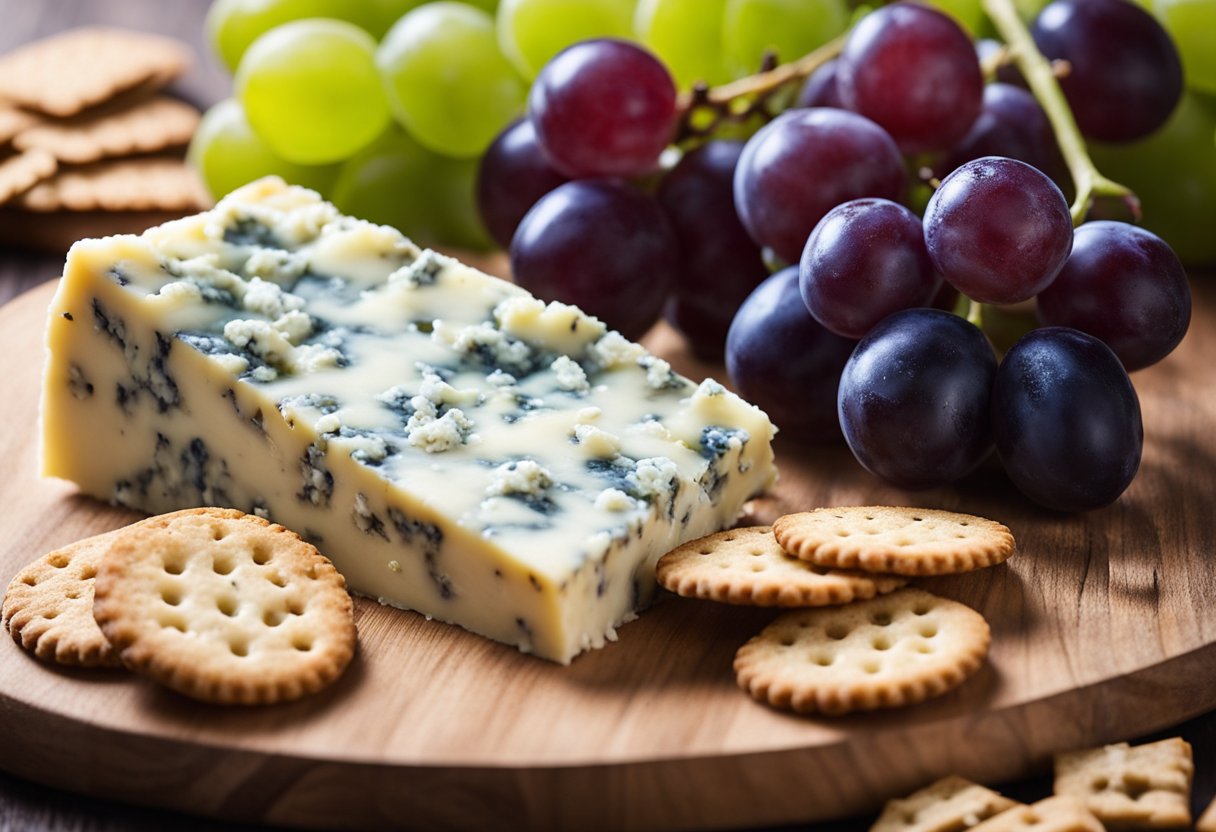
What is the texture of blue cheese?
Blue cheese has a soft and creamy texture. The cheese is usually crumbly, with veins of blue mold running through it. The texture of blue cheese can vary depending on the type of cheese and how long it has been aged.
Is blue cheese bitter or sour?
Blue cheese has a sharp and tangy flavor, but it is not necessarily bitter or sour. The cheese has a unique taste that is often described as pungent, earthy, and slightly sweet. The tanginess comes from the blue mold that is used in the cheese-making process.
What cheese is similar to blue cheese?
There are several cheeses that are similar to blue cheese, such as Roquefort, Gorgonzola, and Stilton. These cheeses are also made with blue mold and have a similar sharp and tangy flavor.
How would you describe the taste of blue cheese?
The taste of blue cheese is complex and intense. It has a sharp, tangy, and slightly sweet flavor, with a distinctive earthy and nutty undertone. The cheese can be quite pungent, with a strong aroma that some people find overpowering.
What does blue cheese dressing taste like?
Blue cheese dressing has a creamy texture and a tangy, slightly sweet flavor. The dressing is made with blue cheese, mayonnaise, sour cream, and vinegar, along with other seasonings. It is often used as a dip for vegetables or as a topping for salads.
Is blue cheese healthy?
Blue cheese is a good source of calcium and protein, but it is also high in fat and sodium. It is not considered a low-calorie food, so it should be consumed in moderation as part of a balanced diet.
Some people may be allergic to blue cheese or have an intolerance to lactose, so it is important to be aware of any potential health risks before consuming it.







